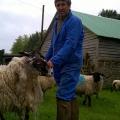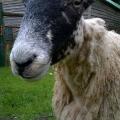Greetings from the South West. Spring is an interesting time for lameness with management of some of the key risk factors taken out of our control.
Ultimately our lameness management has been working towards achieving a low level now- with us aiming for fit ewes which continue to have high intakes into the lambing window. We are trying to avoid lame ewes with reduced intakes and reduced standing times... The costs of twin lamb disease, mastitis, mismothing of lambs, lamb mortality are well documented. Furthermore these ewes need to keep eating into lactation and ideally not be a source of the infectious lameness agents for our lambs who need to achieve their target growth rates. This is particularly important for Dichelobacter nodosus I.e. Agent which causes Scald and foot rot.
We often see explosions in lameness in the lambing window because of increased stocking densities of ewes either in housing or in lambing paddocks. I am trying to encourage flocks to treat individuals especially promptly (remember which is going to be more stressful for a heavily in lamb ewe...a considered catch up or remaining lame in her most metabolically stressful time of year). Where possible I do encourage flocks to isolate these animals but often this is challenging with flocks already split intro nutritional management groups. In housed animals, keep the bedding well stocked. It will reduce the incidence of mastitis and lameness.
Your flocks population is about to explode so keep thinking of the five point plan. Pasture rotation will help both parasite control and lameness management. Remember Footrot should be mostly gone on pasture 14 days sheep free but that there will be infection hotspots on farm i.e. around water points, feed troughs, creep feeders and gates. Where possible keep portable objects moving!
Finally keep, keep, keep, recording and do it thoroughly.
Will those spray marked for lameness treatments still be there at culling? Three strikes and those ewes should be out. No negotiation even in an expanding flock. Can you really afford to keep a repeat offender?
Emily Gascoigne MRCVS
Sheep Vet Synergy Farm Health



